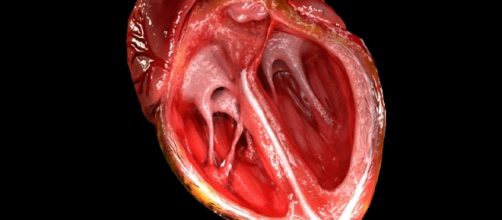Cardiovascular Disease is one of the leading causes of death in the United States and across the globe. Trying to find new methods to combat this illness involves learning more about the factors that contribute to this illness. Researchers at the University Of Turku in Finland discovered a correlation between socioeconomic status and heart health, suggesting that income may be a contributing factor to the development of cardiovascular disease.
Cardiovascular disease
Cardiovascular disease, often referred to as heart disease is one of the most prevalent conditions across the world.
According to world renowned hospital the Mayo Clinic, this illness "involves narrow or blocked blood vessels that can lead to a heart attack, chest pain (angina), or stroke." Cardiovascular disease is considered a chronic illness meaning that once it starts, it is rarely reversed. The risk of cardiovascular disease can be reduced through a healthy diet and exercise.
Finnish study identifies a correlation between adult heart health and family background
In an expansion on a previous study known titled Cardiovascular Risk in Young Finns, researchers at the University of Turku decided to follow up on participants to measure their heart health. The purpose of this research was to see how participant's income during childhood effected their health in adulthood regardless of whether or not their socioeconomic status changed.
Just over 1,800 adults participated in this study. The researchers used previous data collected in the Cardiovascular Risk in Young Finns study to identify participants childhood socioeconomic class. People were put into categories based on whether they were brought up in a lower class, middle class, or upper class family. Once the class distinctions had been identified, researchers collected information on the cardiovascular health of participants.
One of the major findings in this study was a direct correlation between childhood class and increased left ventricular mass and diastolic dysfunction. People from lower class upbringings were significantly more likely to have hearts with larger left ventricles. This condition is known as Left ventricular hypertrophy (LVH) and involves an increased muscle mass on the left ventricle of the heart.
Even though there is more muscle, the heart is not able to beat as easily. Instead, LVH causes the pressure in the ventricle to increase. Over time this can lead to compression of the blood vessels and ultimately heart failure.
Diastolic Dysfunction occurs when the ventricles of the heart are not able to properly. When a heart beats normally, it alternates between contractions of the ventricles and a relaxation period known as diastole. With diastolic dysfunction, the heart is not able to relax properly causing the pressure in the ventricles to increase. Over time this can lead to fluid collection in the blood vessels of the lungs.
Both LVH and diastolic dysfunction are considered to substantially increase the risk of developing cardiovascular disease. In this study, these two conditions were found to be related to family income during childhood despite other factors later in life. Adult income had no connection with these disorders.


